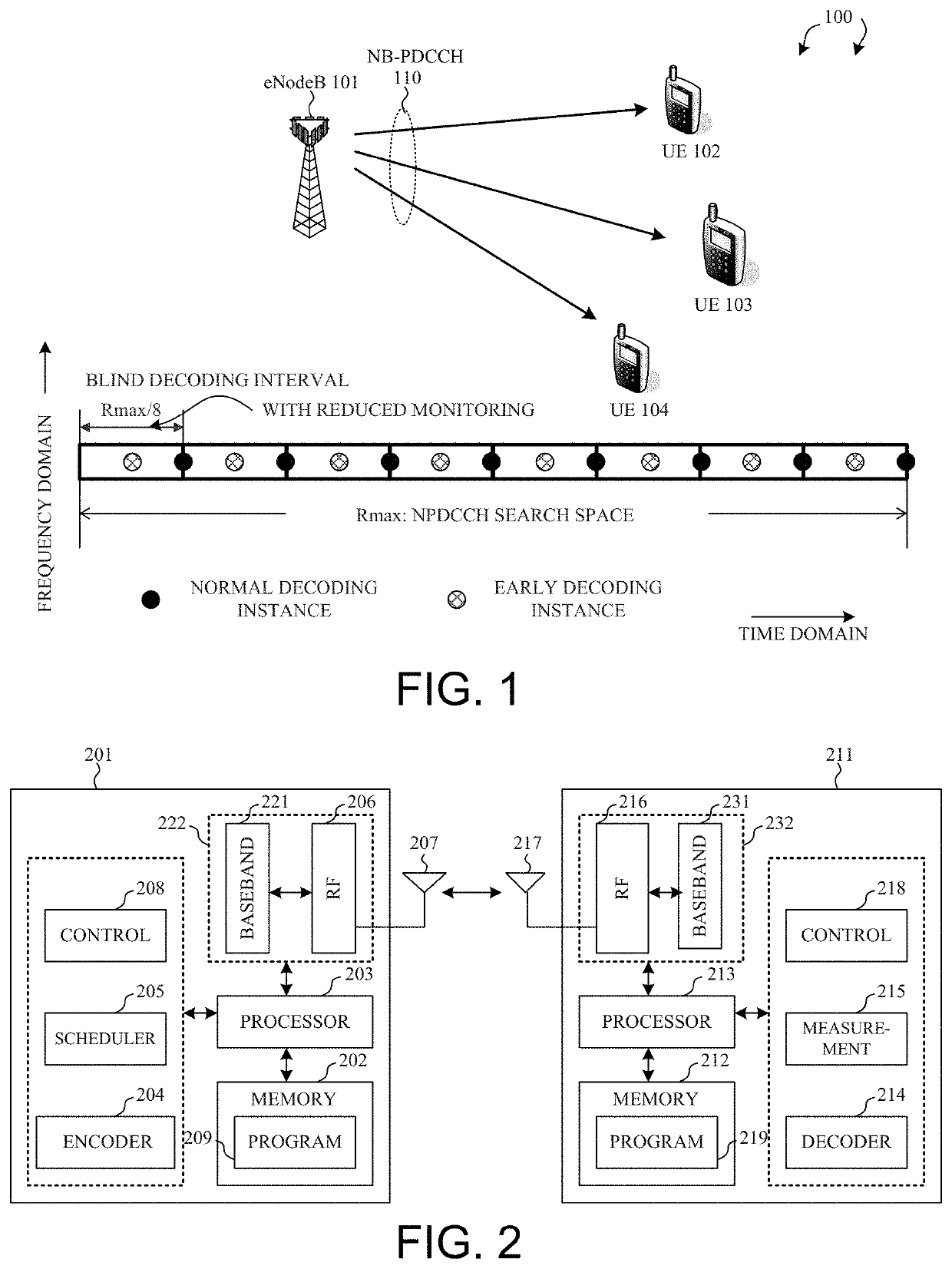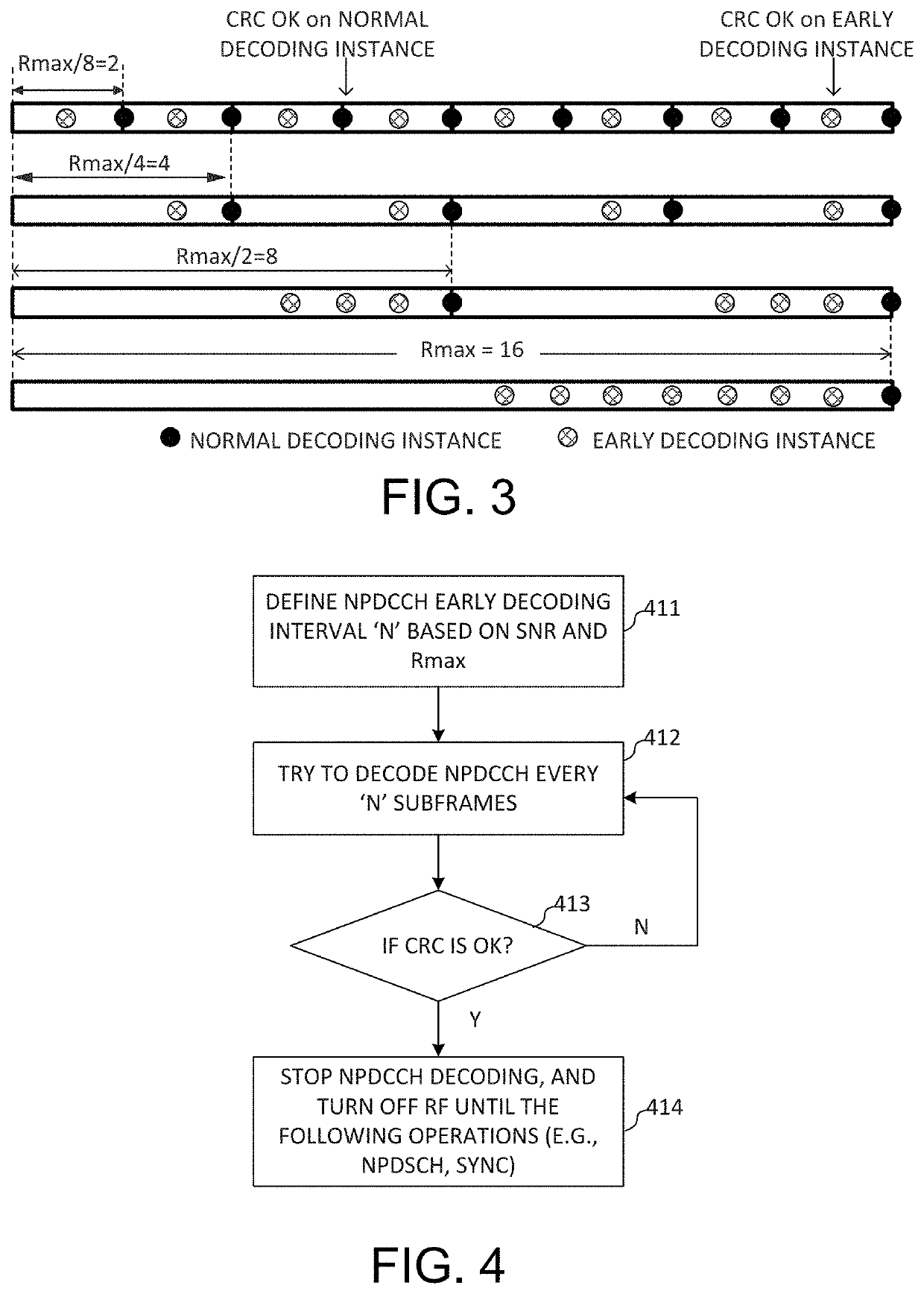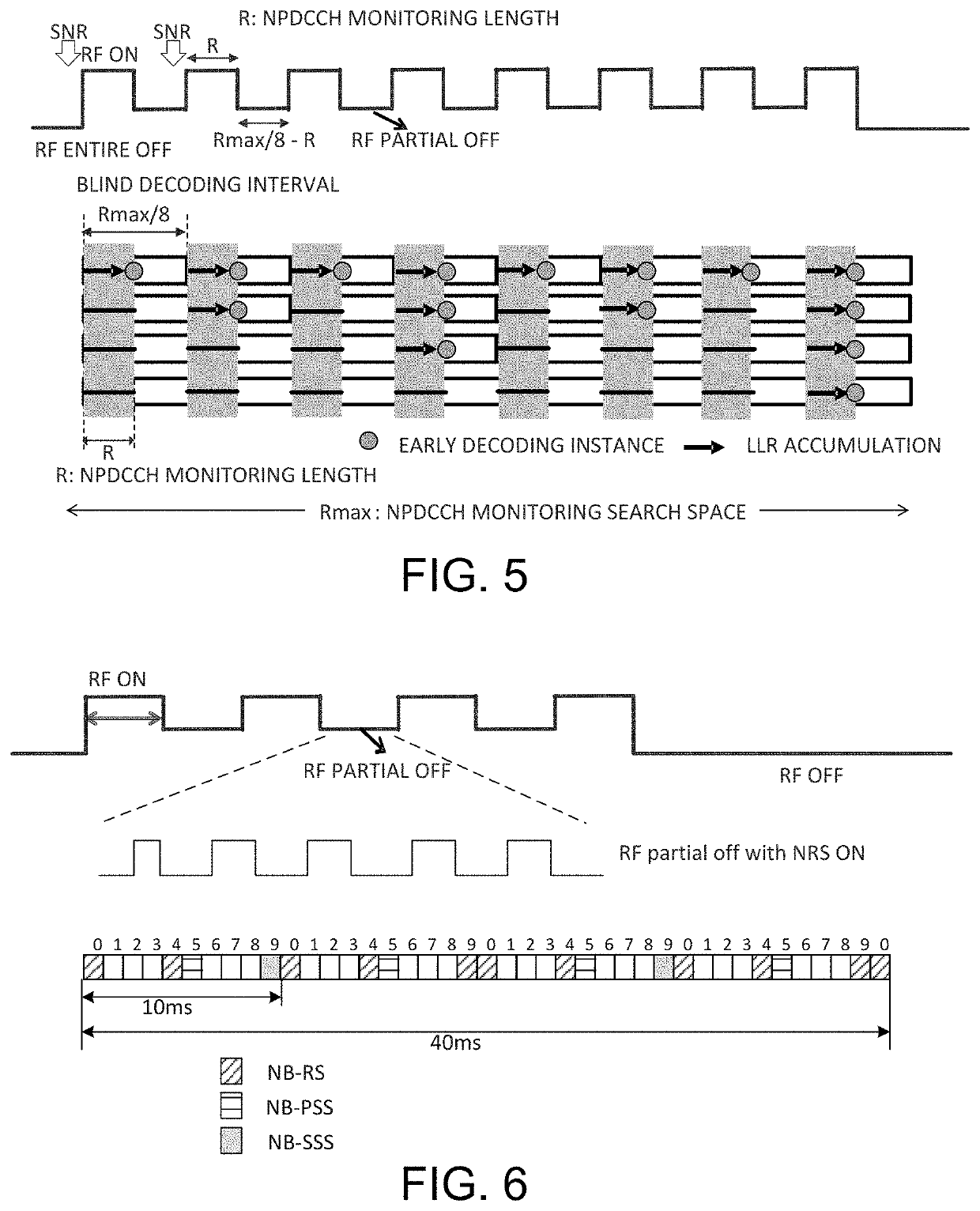Pdcch monitoring for low power consumption for narrow band internet of things
- Summary
- Abstract
- Description
- Claims
- Application Information
AI Technical Summary
Benefits of technology
Problems solved by technology
Method used
Image
Examples
first embodiment
[0032]FIG. 3 illustrates NPDCCH monitoring with early decoding. NPDCCH early decoding is defined to stop the RF receiving chain as long as NPDCCH is successfully decoded (checked by CRC). For a large maximum number of NPDCCH repetition Rmax, UE monitors one of the following sets of NPDCCH search space {AL, Ri, C}: {2, Rmax / 8, 8}, {2, Rmax / 4, 4}, {2, Rmax / 2, 2}, and {2, Rmax, 1}. FIG. 3 depicts the four different search spaces when Rmax=16 and the NPDCCH search space is Rmax=16 subframes. In the example of {AL=2, Ri=Rmax / 8=2, C=8}, the number of repetition Ri=2, e.g., there are 2 NPDCCH repetition every Ri=2 subframes for each blind decoding interval, and there are total 8 blind decoding for 8 NPDCCH candidates. The normal decoding instance therefore occurs at the end of blind decoding interval of every Ri=2 subframes. In early decoding, the UE tries to decode NPDCCH every N subframe, where N is a configurable integer and is adjusted based on Rmax and the signal to noise ratio (SNR) ...
second embodiment
[0035]FIG. 5 illustrates NPDCCH monitoring with reduced monitoring. Sometimes, there is only NPDCCH with no corresponding NPDSCH. Under NPDCCH-only case, UE may intentionally skip some subframes for NPDCCH monitoring during each blind decoding interval. For Rmax>16, the blind decoding interval is Rmax / 8 subframes, which is at least Ri=2 two subframe length. NPDCCH monitoring can be reduced within the NPDCCH search space of every Rmax / 8 subframes. Specifically, a NPDCCH monitoring length of R subframes is determined within the blind decoding interval. For the first R subframes of the Rmax / 8 subframes, the UE RF chain is entirely ON for NPDCCH monitoring. For the remaining Rmax / 8-R subframes of the Rmax / 8 subframes, the UE RF chain is in partial OFF state to maintain synchronization and channel estimation functionally.
[0036]As depicted by FIG. 5, the UE RF is entire OFF before starting NPDCCH monitoring. The NPDCCH monitoring search space contains Rmax subframes and is divided into ei...
PUM
 Login to View More
Login to View More Abstract
Description
Claims
Application Information
 Login to View More
Login to View More - R&D
- Intellectual Property
- Life Sciences
- Materials
- Tech Scout
- Unparalleled Data Quality
- Higher Quality Content
- 60% Fewer Hallucinations
Browse by: Latest US Patents, China's latest patents, Technical Efficacy Thesaurus, Application Domain, Technology Topic, Popular Technical Reports.
© 2025 PatSnap. All rights reserved.Legal|Privacy policy|Modern Slavery Act Transparency Statement|Sitemap|About US| Contact US: help@patsnap.com



